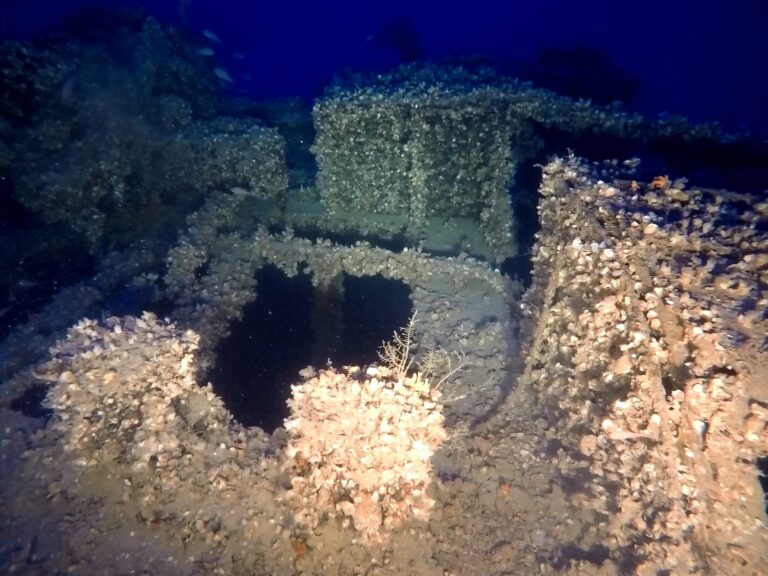The upright wreck of a pre-WW1 British whaler that became a Greek Navy minesweeper during WW2 has been located 153m deep north-east of the Aegean island of Hydra – marking another achievement for the underwater research team of Kostas Thoctarides, Greece’s prolific wreck-hunter.
The overloaded boat capsized and sank suddenly on 2 May, 1945, only five days before the official end of the war in Europe. A hundred people were lost in the sinking, many of them servicemen and their families.
Sperchios had started life in 1912 at Smith’s Dockyard in Middlesbrough in the UK, constructed as a 32m whaling ship named Noble Nora. In June 1917, the Royal Navy equipped it for use as a patrol boat during WW1.
In April 1941 Noble Nora was designated FY 189 as a minesweeper, and in September 1943 was handed over for the use of the Greek Navy, which converted it into a fleet auxiliary vessel, the Sperchios.
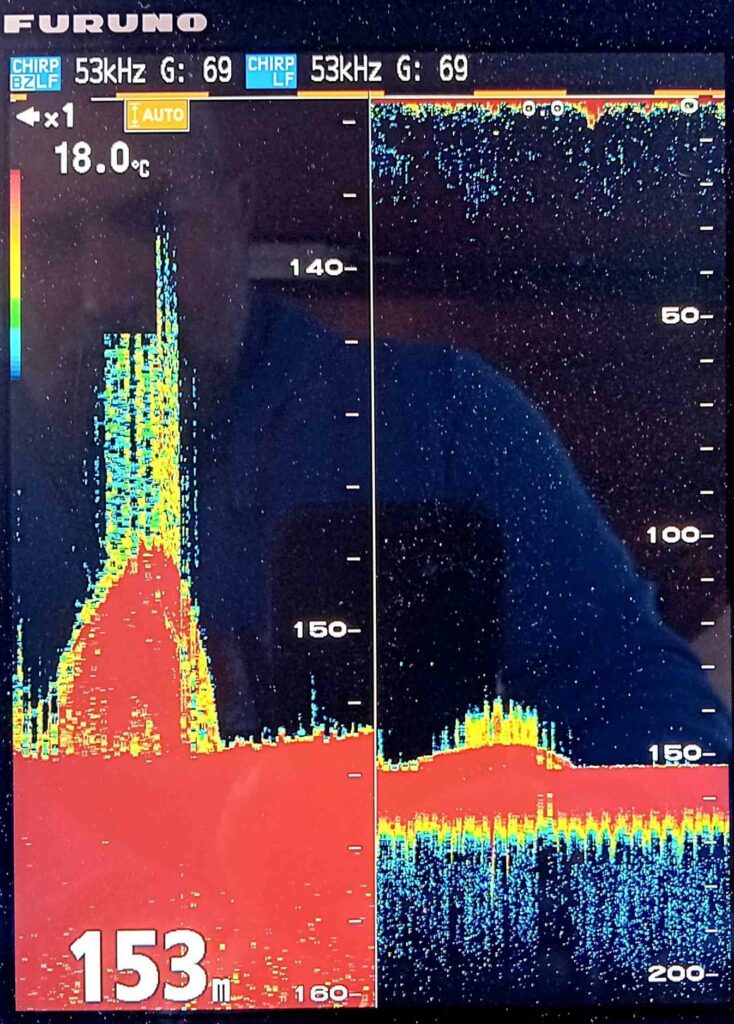
The wreck was initially detected using sonar, and video footage was then captured from an ROV. Thoctarides says that the 20mm gun-mount carried before the boat’s conversion from a minesweeper was visible. The starboard anchor-chain was in place but the port chain was missing. A small vertical tear could be made out on the port side.
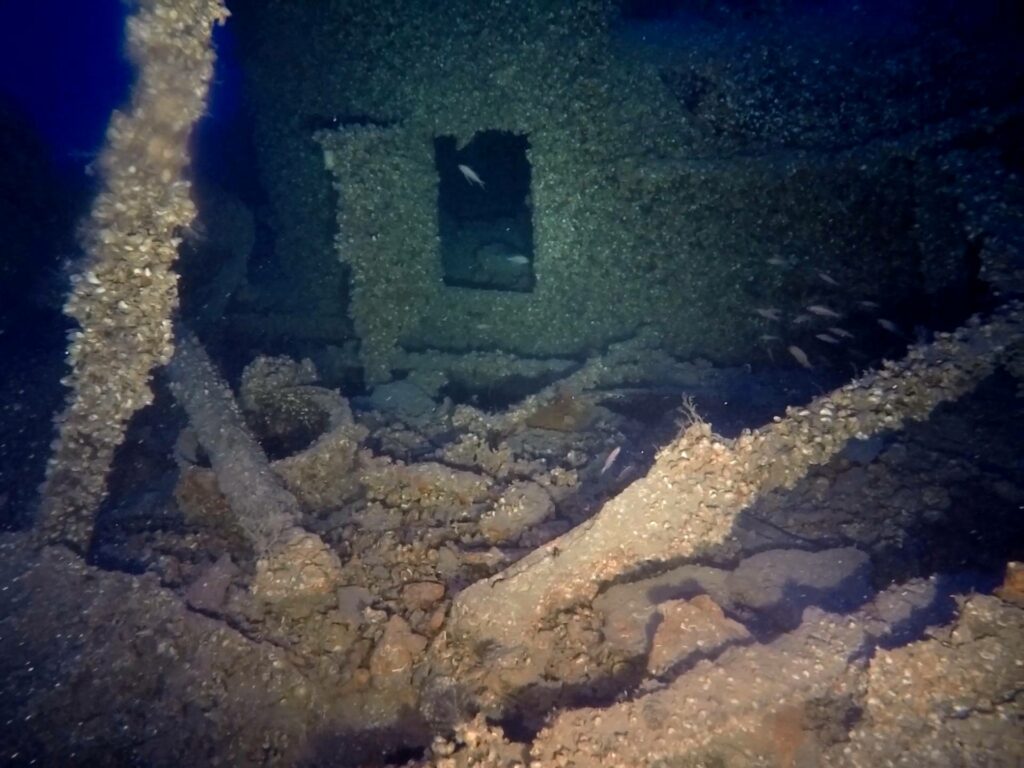
On the port side and in the middle of the superstructure was the only open door. On the lower part of the stern a net could be seen draped over the propeller and rudder.
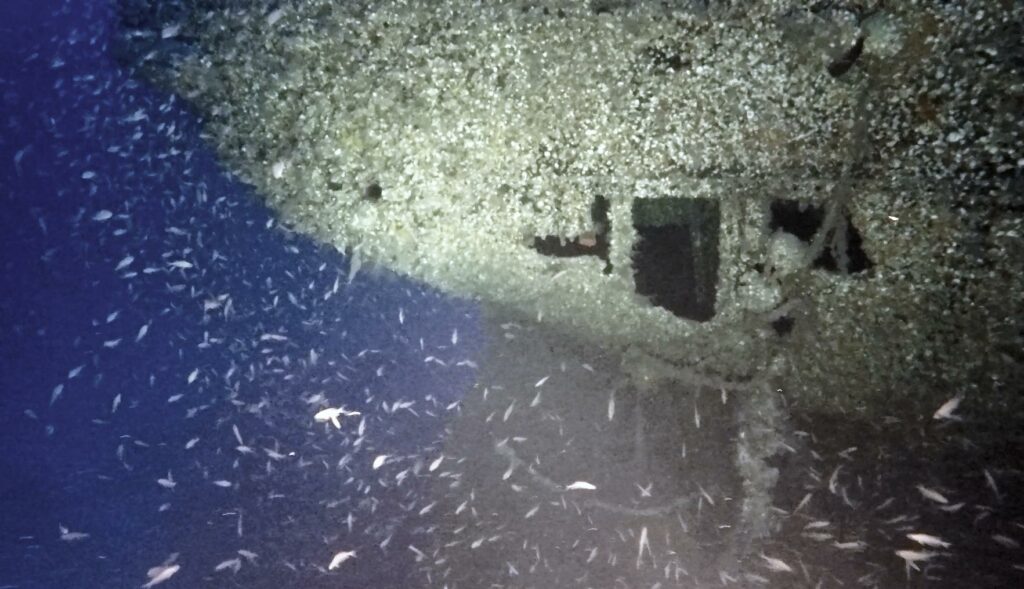
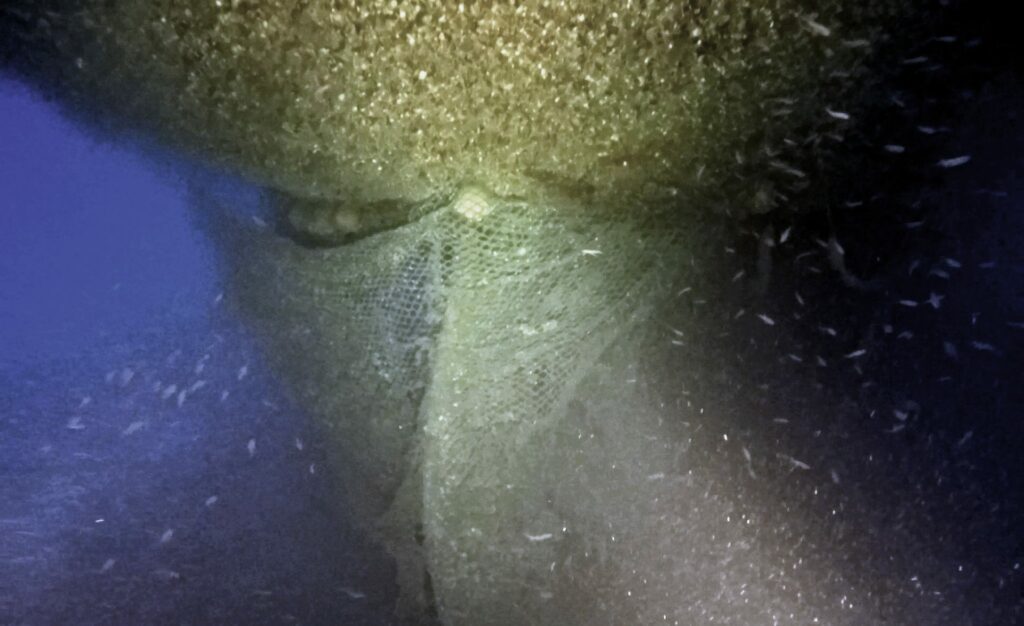
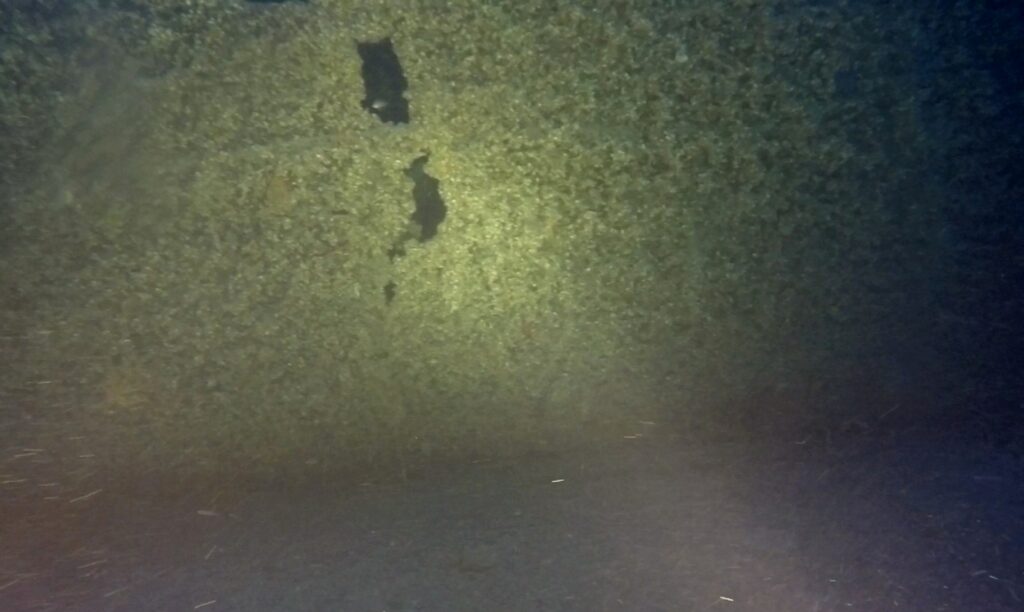
Heading home for Easter
The dimensions and the wreck’s location made it possible for the team to positively identify it as the Sperchios. Because of a shortage of passenger ships at the time the vessel was being used to ferry home military personnel, many of them accompanied by their young families, to celebrate Easter as the hostilities died away.
Sperchios had left the port of Piraeus bound for the Aegean islands of Syros, Samos, Chios and Lesvos, but was grossly overloaded. There should have been a limit of 40 passengers but the port authority had registered 75 and there were suspected to have been many more, with large amounts of luggage piled on the stern deck.
Research by Thoctarides and his team has now suggested that the boat departed with 138 passengers and crew on board.
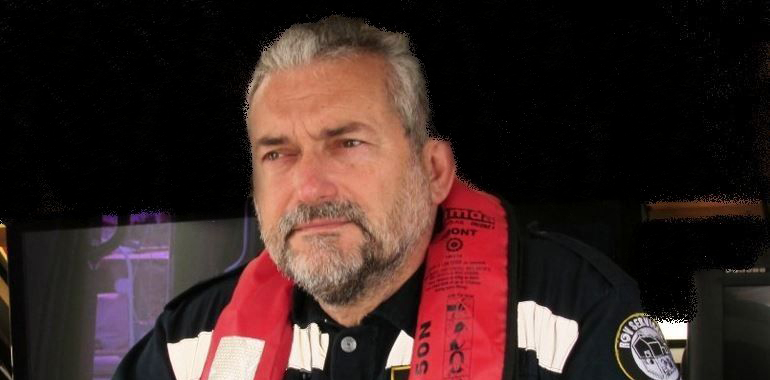
The weather was good and the sea calm but three hours out, as night fell, it started to rain. At this point passengers in exposed areas ignored the crew’s advice and shifted en masse to the covered areas to port. The vessel had already been showing a list to that side before departure.
The captain, who was not on the bridge, saw that the ship was being dragged close to an offshore minefield and turned the rudder hard to starboard. The vessel capsized to port, throwing many people straight into the sea.
With no time to raise the alarm and no vessels in the vicinity, people who had managed to stay at the surface were left to struggle for hours without life-jackets. Twenty people clung together on a barrel for many hours, but 13 of them became too cold and exhausted to hang on and did not survive.
A passing oil tanker, Agios Spyridon, was able to pick up 37 people in the early hours of 3 May and took them back to Piraeus. Greek Navy torpedo boats found one last survivor, a woman called Maria Rousi, at 4pm on the rocky coast of Cape Zourva, a lighthouse on Hydra’s easternmost point.
“The first thing I did when I was in the sea was to get rid of my dress, then I marked out my objective, Cape Zourva,” she later explained. “At first I heard desperate voices all around me but they slowly faded away. My hope of reaching the shore was huge and I lasted nine hours at sea. It took another six hours of waiting on the deserted beach for me to recuperate.”
Captain Neofytos, commander of Greek naval schools, lost his daughter and two nieces in the sinking. “In my opinion, the wreck of Sperchios was not due to overloading and neither could the turning of the helm have overturned the ship, for technical reasons,” he told the court investigating the tragedy. “I believe an improper inspection was carried out.”
Piraeus Naval Court sentenced Sperchios’s captain to six month’s jail with a three-year suspension but charges were dropped against five other defendants, including the Piraeus Naval Base commander and port authority officials.
Kostas Thoktarides runs the Dive Planet Blue dive-centre in Lavrio, Attica on the Greek mainland.
Also on Divernet: Unyielding pursuit: The finding of WW2 sub HMS Triumph, Greek wreck-hunter solves 1959 mystery, Mystery wreck found off Greek island, Crew were first off Italian shipwreck
